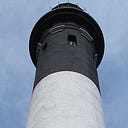Have you spotted this invasive insect on L.I.?
By Athena Dawson
Editor’s note: Dawson wrote this piece for her liherald.com internship. To read the original, click here.
A new invasive insect species, the spotted lanternfly, has made its way to New York City. In a recent new release, the New York State Department of Agriculture and Markets urged people to take preventive action to stop infestation throughout the city. Although the spotted lanternfly has not reached Long Island, people should be concerned for how an infestation could affect the local agricultural industry here, officials say.
Since the lanternfly was discovered in Pennsylvania in 2014, the AGM and other agencies have attempted to control a larger outbreak. By 2017, scientists had surveyed multiple at-risk areas, inspected nurseries and educated the public in reporting the spotted lanternfly. The insect has been found in New Jersey, Maryland, Delaware, West Virginia and Virginia.
The spotted lanternfly originated in Asia. Scientists believe that it was brought to the United States through trade from Korea rather than changed migration patterns. It feeds on the tree-of-heaven and more than 70 other plant species. Defining characteristics include a yellow abdomen with black horizontal stripes, red underwings and light-colored outer wings with brightly patterned spots.
Pennsylvania has tried to slow the infestation by quarantining certain sites affected by the lanternfly. However, as of 2020, the insect has been found in New York, and has infested parts of Staten Island. The AGM is concerned about potential infestation in the rest of New York City.
The spotted lanternfly weakens plant structures and secretes a honeydew substance that attracts fungus and other insects. It is already destroying crops native to New York’s agricultural industry such as grapes, apples and hops.
The AGM estimates that in New York State, potential lanternfly damage could reach $300 million per year, particularly affecting the grape and wine industry.
The AGM news release urged residents to follow guidelines in dealing with the spotted lanternfly. The guidelines include information on reporting sightings of the insect and trapping it, through access to free webinars and literature posted on the AGM website. The next webinar will be held Oct. 27.
Brian Eshenaur, the senior extension associate at Cornell University’s State Integrated Pest Management Program, expressed concern that, within the next growing season, the spotted lanternfly could spread to Long Island. Eshenaur explained that since the Staten Island outbreak, many isolated populations have appeared within the five boroughs. Though there are no established spotted lanternfly populations on Long Island, Eshenaur said he believed the Island’s long growing season could support the fly’s life cycle. He also said that it is important for locals in the agriculture industry to be aware of the destructive impact the insect has on produce.
“It’s an insect that doesn’t chew the leaves; it actually taps into the pipe work of the tree, the vascular tissue, and sucks the pieces out to remove the sap,” he said. “It weakens the vines, and sometimes the vines in the weakened state would not survive the winter.”
Specialists who work with Cornell tracking the spotted lanternfly have already alerted the vineyard industry. Locally, some florists are unaware of the invasive insect. One florist, John Meyer, had heard about the lanternfly, but customers have not come in with samples of the fly or asked about it.
In the AGM news release, State Agriculture Commissioner Richard A. Ball said, “The department has been working diligently to mitigate the impacts of this destructive pest.”
New Yorkers who observe the spotted lanternfly can report the sightings online at the AGM website using the form titled “Spotted Lanternfly Public Report.” New York State residents can also find information at the AGM website about managing the pests, such as destroying the adult fly and its eggs.
Guidelines also include inspecting places where the fly can lay eggs such as vehicles, bags and clothing. Signs of a spotted lanternfly infestation include open tears and sap secretions from tree trunks, large egg deposits, as well as quantities of honeydew buildup under leaves. The spotted lanternfly is not poisonous to humans, nor does it bite or sting, so approaching the insect is not a safety concern.

